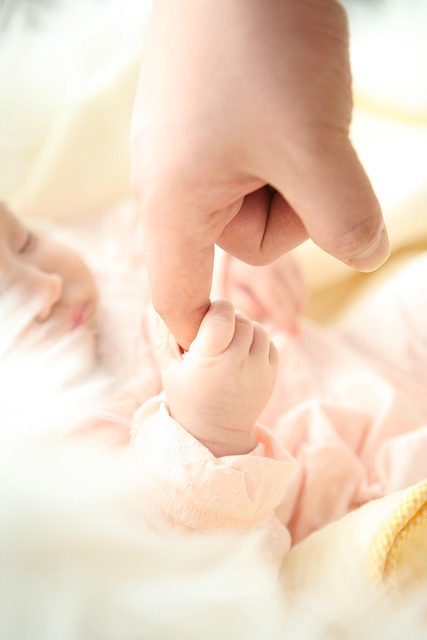As I held my daughter Mia’s tiny hands, she wobbled carefully around the playground, displaying a newfound confidence that brought a smile to my face. Despite her determination, Mia still grapples with balance, muscle strength, endurance, and coordination. At nearly 2 ½ years old, the ability to walk independently remains just out of reach. Each day, this reality weighs heavily on my husband and me. She deserves the joy of walking to her toys, running alongside her peers to the swings, and climbing the rock wall without needing our assistance.
Navigating the cramped spaces of the playground equipment, my husband and I squeeze through metal bars and tight corners, ensuring Mia can explore the play area that piques her interest. I often find myself envious of those parents who sit idly, casually watching their children while scrolling on their phones. The allure of having a fully mobile child is tantalizing, yet it feels just beyond our fingertips.
For us, the burden feels immense. But for Mia, every moment is filled with play and laughter. She doesn’t yet comprehend the delays she faces; her joyful smile reassures us not to dwell too much on our worries.
Mia was born prematurely, which contributed to her low muscle tone. Her body was not fully developed for life outside the womb. Nevertheless, she has shown incredible resilience, learning to bottle-feed, breathe independently, and gradually improve her strength and endurance. Yet, she faces additional physical health challenges that threaten to hinder her independence. Diagnosed with arthrogryposis multiplex congenita, many of her joints were stiff and unyielding at birth. To liberate her from these constraints, her limbs require extensive manipulation, therapy, and exercise.
From her first day in the NICU, we were told she would be okay. Her joints—wrists, elbows, knees, and hips—were expected to unfold. Despite her feet being positioned awkwardly and one arm refusing to budge, we took it upon ourselves to make this prognosis a reality. Guided by physical therapists, we stretched her tiny hands in every direction possible to straighten her stubborn wrists. Although well-meaning, nurses often lacked the time to ensure Mia completed her stretches, so my husband and I took charge during every diaper change. Each night, as we feared her muscles might tighten again, we reluctantly left her bedside, exhausted yet determined.
As her therapies evolved to match her progress, we focused on her arms while her legs were encased in a full-leg cast to address her clubfoot. During this time, we couldn’t bounce her on her feet, stand her at the edge of a table, or place her in a jumper, leading us to worry about her leg development. After enduring eight weeks of casting and nearly 24/7 brace use, we worked with her every morning, evening, and just before bedtime.
When her legs were finally brace-free during the day, we seized the opportunity to help her stand upright. My heart sank at how weak her legs had become; never having had the chance to build strength, we were now tasked with teaching Mia to use her legs—the instinctual process that most babies naturally grasp.
Now, as we sit on the floor each night, our backs hunched and bodies tense, we often struggle to detect her progress hidden beneath the relentless physical challenges. With Mia approaching 25 pounds, we must maintain our own physical health to keep up with the demands of carrying, catching, and working with the various therapy apparatuses that clutter our living room.
Others marvel at her progress, complimenting her ability to take more steps, bear weight, and navigate furniture like an exuberant puppy. Yet, for us, the rigorous therapy schedule and constant appointments take a toll. We try to suppress our deep-seated worries about her ability to keep pace with her friends while putting on smiles that encourage her. We strive to create a joyful world for Mia, even when we feel worn down, anxious, and sometimes sad.
Keeping these feelings bottled up can be overwhelming, but we would never let Mia bear the weight of our concerns. It is our responsibility to nurture her happiness and ensure she experiences the delightful childhood she deserves. When progress feels as slow as ketchup stuck at the bottom of a bottle, we occasionally step back to recognize her breakthroughs. Just like that ketchup, she is bound to release with enough persistence.
On the playground, Mia let go of our hands, teetering left and right yet often regaining her balance. She expressed a desire to be placed on her feet when we tried to let her rest in our arms. Watching the other kids dart from the monkey bars to the slide, she decided she would join in too, albeit in her own charming way. Her determination is nothing short of inspiring. And she did it all with a radiant smile.
For more insights on navigating parenting challenges, check out this post on how to consider in-home insemination, which may be particularly relevant for some families. For further information on pregnancy and home insemination, this resource is excellent.
Summary:
In this heartfelt reflection, Samantha shares the journey of her daughter Mia, who, at nearly 2 ½ years old, is still working toward independent walking due to physical challenges stemming from her premature birth and arthrogryposis multiplex congenita. While navigating the emotional and physical demands of therapy and the playground, Samantha highlights the joy Mia finds in play, despite the hurdles. The article emphasizes the importance of nurturing Mia’s happiness while managing parental concerns and the physical toll of her care.
